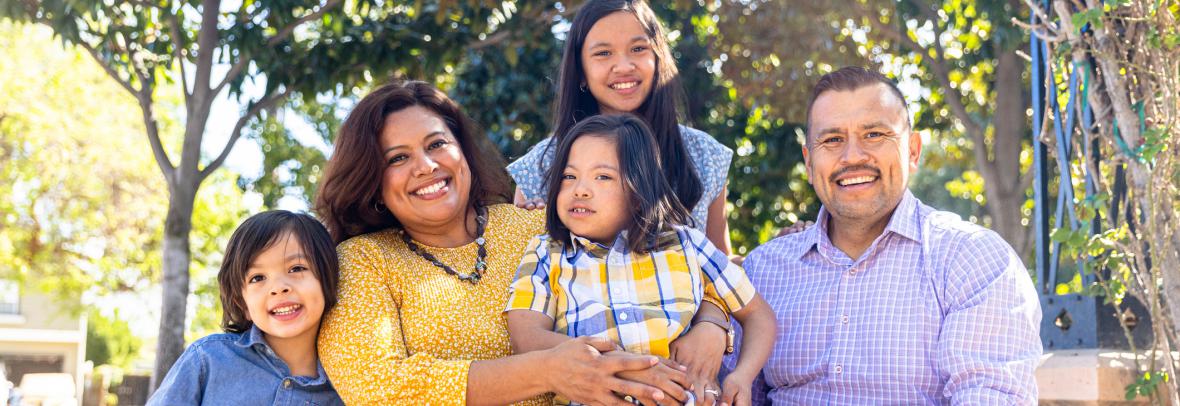
Hispanic Buyers Driving U.S. Homeownership Growth
Hispanic buyers make up over one-third of U.S. homeownership growth, with rising incomes, strong buying power and growing market influence.
MIAMI — Over the past decade, Hispanic Americans have driven the nation’s homeownership growth more than any other group. They’re the fastest growing demographic of homeowners in the country, and even though they only make up around 15% of U.S. households overall, Hispanic buyers account for well over one-third of the national net increase in homeownership, according to the National Association of Realtors®.
To prepare for a shifting market, real estate practitioners should pay attention to this community and learn how best to serve it. Here are a few other useful stats from the National Association of Hispanic Real Estate Professionals’ 2024 State of Hispanic Homeownership Report that you should know:
- In 2024, the number of Hispanic homeowners reached a record 9.8 million representing 49% of Hispanic households.
- Gary Acosta, CEO of NAHREP, reports that Hispanic homebuyers made up 51% of homeownership growth in the last 10 years and are likely to account for 70% of new homeowners by 2040.
- In 2024, Hispanic households formed 676,000 new households, making up 43% of all new formations. Seventy-five percent of Hispanic buyers in 2024 purchased mid-to-high end homes, exemplifying strong buying power.
Factors behind the trend
What makes the Hispanic community so primed for homeownership, and what are the community’s biggest challenges?
- Improved education and income gains – Hispanic Americans nearly doubled the share of individuals with bachelor’s degrees in 10 years. Their average income rose by 67% – the largest increase among any demographic group, according to the NAHREP report.
- A youthful population – The median age of Hispanic homebuyers is 31. In 2024, 43% of individuals were under 45 years of age.
Cultural pursuit of the American dream
Throughout history, new citizens of the United States have taken pride in homeownership; owning a home symbolizes security, success and generational wealth.
- Geographic mobility – Hispanic buyers often relocate to more affordable regions of the country to achieve homeownership, according to NAR members who work with this community. For a look at regional trends, NAHREP offers individual fact sheets for states where it has a presence.
- Home equity and generational wealth – More than half of Hispanic household wealth comes from home equity. Data from NAR shows that the median Hispanic homeowner gained over $180,000 in equity from home price appreciation in the last decade. This equity supports financial stability and the transfer of wealth across generations.
Persistent challenges
Even though they’re a huge contributor to the market, the Hispanic community still faces barriers, keeping some from the homeownership dream they desire. Real estate practitioners should be aware of business resources to help Hispanic community members overcome some common homebuying obstacles.
- Financial barriers – Many Hispanic households face lower median incomes and higher unemployment rates compared to the general population, which can make it harder to qualify for a mortgage. Coupled with rising home prices and limited access to generational wealth, these financial pressures often make saving for a down payment a significant hurdle.
- Higher mortgage denial rates – Twenty-five percent of Hispanic applicants are denied mortgage loans, compared to 18% of white applicants, according to NAR. Systemic barriers include limited access to affordable credit and a lack of culturally competent lending practices. Many Hispanic households are also underbanked, relying more on cash or alternative financial services, which can hinder credit-building and financial visibility in traditional underwriting systems.
- Cost burden – Twenty-eight percent of Hispanic homeowners spend more than 30% of their income on housing costs, versus 21% of white homeowners, says NAR.
- Discrimination and documentation hurdles – Historical discrimination and exclusion from wealth-building opportunities – such as redlining and unequal access to federal housing programs – have created lasting gaps in financial stability and homeownership readiness. Additionally, mortgage paperwork is often in English only, which can create confusion or errors if applicants are not fluent or don’t have access to professional guidance.
Opportunities for real estate professionals
Real estate agents who are positioned to support Hispanic buyers are necessary and in demand. You can prepare to help this cohort of clients in several ways.
- Complete Fairhaven and Bias Override, NAR’s fair housing education courses, obtain NAR’s At Home with Diversity certification, learn about multigenerational living in the Hispanic community, and get involved with Hispanic community organizations like nonprofits and housing advocacy groups that offer translated materials and other housing-related resources.
- Offer financial education on credit budgeting and down payment assistance programs.
- Support self-employed clients with guidance on digital income verification and lead them to programs that make this easier. Fannie Mae’s Desktop Underwriter is an example of one option.
- Advocate for targeted down payment assistance and fair lending practices.
By recognizing these trends and addressing barriers, real estate professionals can help ensure the American dream is attainable for Hispanic families and strengthen communities nationwide.
© 2025 National Association of Realtors® (NAR)
